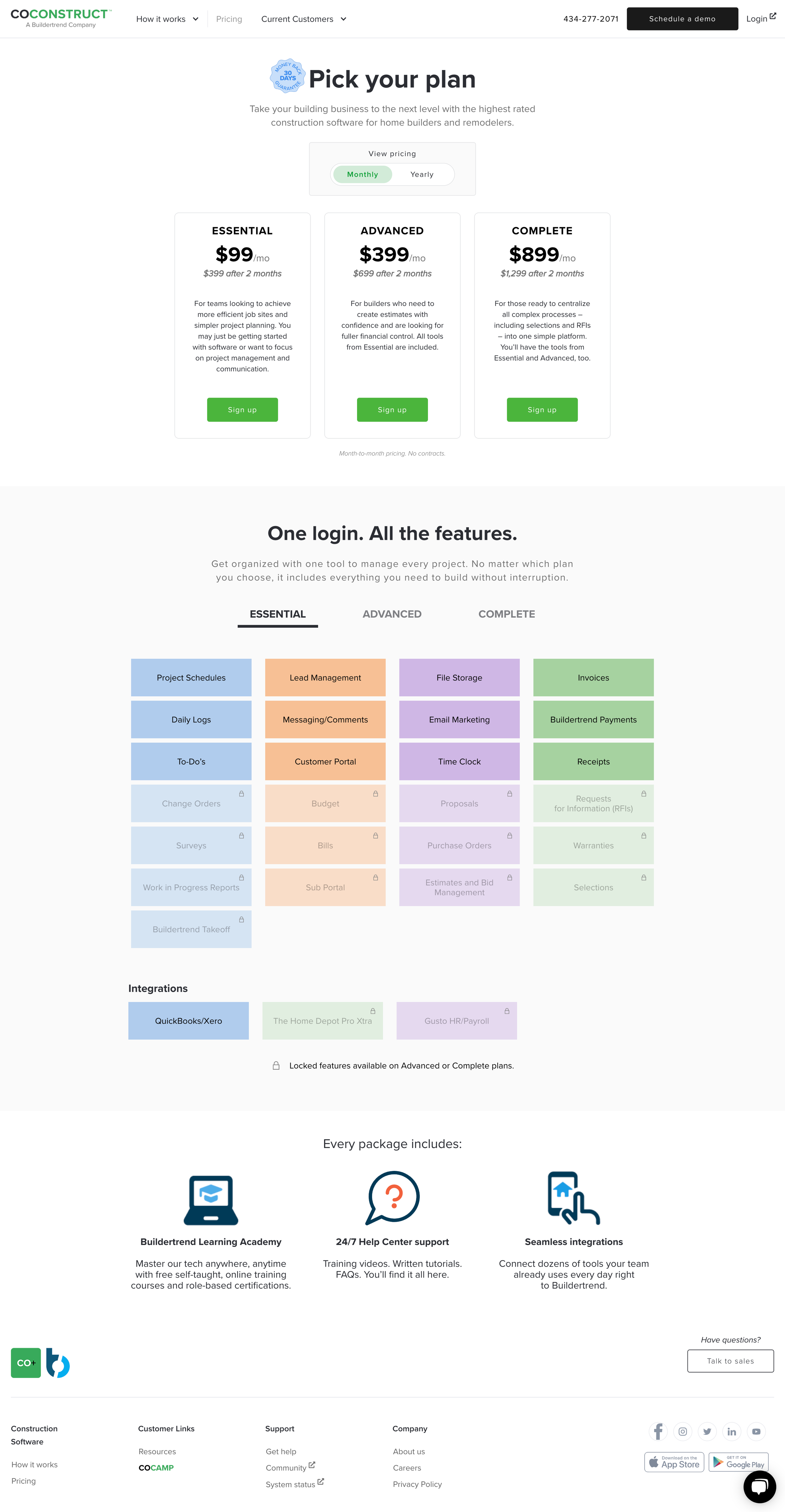CoConstruct
CoConstruct is an all-in-one construction project management platform designed for custom home builders and remodelers. Since 2004, it has helped over 400,000 clients streamline their operations, improve profitability, and simplify day-to-day project management through intuitive software and dedicated support.
Goal
As the sole developer on the CoConstruct marketing site, I was responsible for building two key pages that addressed core user experience and communication challenges:
An interactive testimonials page to improve engagement and social proof.
A redesigned pricing page to clearly communicate the differences between the company’s three pricing tiers.
I collaborated with a designer, content writer, and a PPC specialist to bring these features to life, based on internal stakeholder input (sales, product, and executive leadership).
My Role
Web Development
Technical SEO
Technology
JavaScript
HTML5
CSS3
Webflow CMS
Testimonials Page
The Problem
The original testimonials section was static and lacked interactivity. The goal was to create an engaging experience that encouraged visitors to explore real customer stories, with a strong visual component.
Solution & Execution
Built a custom interactive map showcasing customer stories across various locations.
Each testimonial opened in a modal that adjusted its position dynamically based on device type (mobile/desktop) and viewport visibility.
Overcame modal positioning issues (where popups rendered off-screen) by writing JavaScript to detect the element’s relative position and anchor the modal in a readable, accessible location.
This demo showcases the interactive testimonial page. Users can explore customer stories by clicking on map markers, which open responsive popups tailored to device and screen position for an optimal viewing experience.
A page view of the interactive testimonials map, where users can explore real customer stories by clicking location markers.
Pricing Page
The Problem
The old pricing layout failed to clearly show the tiered feature differences. The challenge was to build a responsive, dynamic layout that let users compare tiers easily and understand which features were included at each level.
Solution & Execution
Created a tiered pricing table using Webflow’s CMS and JavaScript.
Users could switch between the three tiers to see which features were unlocked at each level.
Designed logic to reveal or dim features based on the selected tier (Tier 1 showed 15 features, Tier 2 added 5 more, Tier 3 revealed all 28).
Leveraged Webflow’s native capabilities with custom scripting to ensure responsiveness and performance.
This demo highlights the dynamic pricing page. Users can toggle between three pricing tiers to see which features are available at each level, with interactive logic that reveals or dims features based on the selected plan.
A full-page view of the tiered pricing layout, designed to help users easily compare features across CoConstruct’s three subscription plans.
The Process
Specs originated from internal departments (sales, product, CEO).
The designer and content writer developed mockups and copy.
I translated these into fully functional, responsive pages in Webflow.
For the testimonials page, the PPC specialist ran A/B tests post-launch. Based on test results, I implemented iterative updates to improve engagement. Occasionally, the designer and writer contributed to those iterations if visual or messaging changes were involved.
The Results
Deliverables
Fully redesigned testimonial and pricing pages.
A/B Testing
While I didn’t manage the tests directly, I contributed by implementing updates based on test results, and I learned how small UI/UX changes could significantly impact user behavior (e.g., increased time on page).
Professional Growth
Gained hands-on experience with A/B testing and user-driven iteration.
Improved my understanding of responsive modal design—a frequent requirement in modern CTA workflows.
The Takeaway
This project deepened my frontend problem-solving skills, especially in layout logic and user interaction. It also taught me the power of small, targeted changes when informed by real user data—an insight I’ve carried forward into all my subsequent work.



